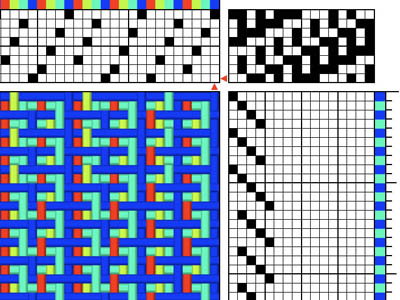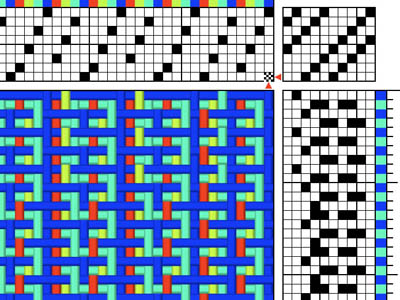As the HWSGV’s 4-shaft weaving course drew to an end the knowledge that there would be a gap of nearly six months to fill between the 4-shaft and 8-shaft course loomed over me. What could I do in that time? It’d be great if I could add to my weaving knowledge by doing workshops, though I should avoid weave structures I’d be tackling next year.
An interstate weaver friend mentioned that she was going to be doing a workshop organised by Complex Weavers, an organisation I hadn’t felt knowledgeable and experienced enough to join in the past. I was ready, I decided, to dip my toes in those waters. At least, I have half a chance of understanding some of what they do now! When I looked into it, I was delighted to learn that we have Australian representatives organising local communications and activities, including the workshop my friend was doing.
So I joined and had lovely email conversations with the two representatives. One was a close friend of Kay, so we exchanged sad and fond reminiscences. The other, the rep for my side of the country, organises the workshops with overseas teachers – all of which are now running online.
The workshop my friend was doing would be a bit hard on my sprained thumb, but one on Echo and Jin with Denise Kovnat looked within my abilities. I’ve admired and wanted to try Echo since the book Echo and Iris came out. Jin – turned taquete, is a structure I hadn’t woven yet, though I had woven taquete as part of a summer & winter sampler. Specific kinds of yarns were required, and thankfully I was able to order them from the rep. It was a tense wait for it to arrive, with Australia Post taking longer to deliver, but they eventually did and I got the loom warped up in time. The threading was intimidating at first as it looks random:

But once I realised that I was looking at sets of four odd shafts followed by four even shafts, and that once you have the first colour threaded the rest follow in order and always in the same direction, I found it much easier.
The workshop was divided into three Zoom days a week apart. Intros or show and tell first thing in the morning, a break, explanation of techniques next, another rest, then more explanation or show and tell.
Students chose a threading based on the number of shafts on their loom. I chose Cats Eyes because, well, cats! The colours I chose for the warp were denim blue, freesia yellow, green glow and coral red. The blue and red were much less saturated than Ashford’s web page shows – though that could be my screen, so the colours combined into a much more yellowy-orange blend than I expected:
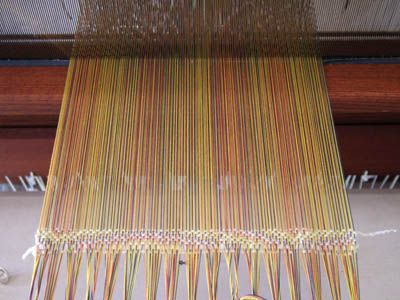
The first week I wove Echo with a twill structure:
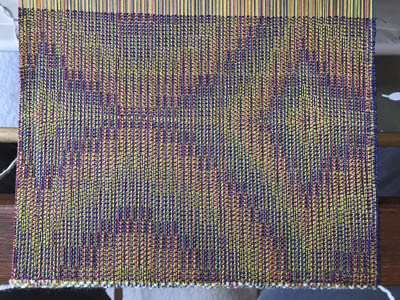
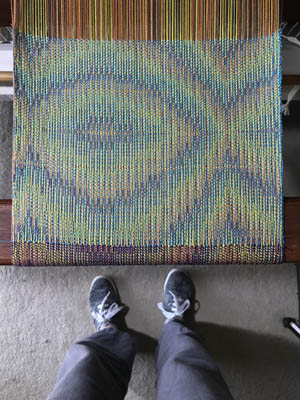
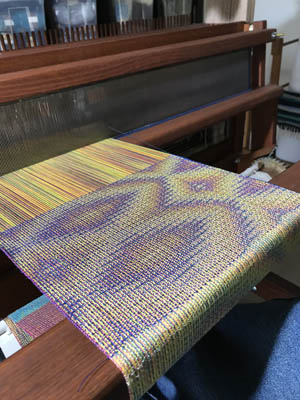

The second I wove jin:

There was only one Jin draft, so I added tabby to one of the twill ones to make it Jin:
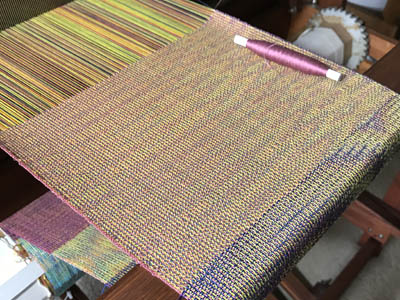
Then made one up from scratch – an advancing extended broken twill with tabby:
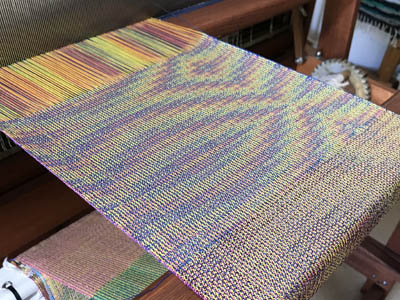
Denise suggested an alternative, non-broken twill based Jin, which was an easier weave:
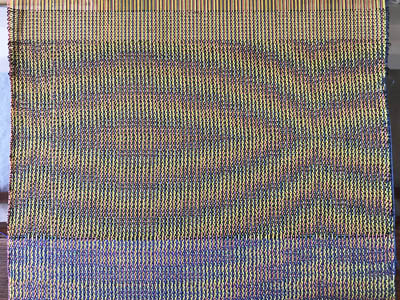
Finally, I tried the doubleweave draft. I’d noticed that the treadling required 16 treadles, which the Lotas does not have. Tim’s Treadle Reducer couldn’t simplify it, but it said it’s calculations don’t allow for using multiple treadles. I decided to see if that could be done. To my surprise it could!
But it would mean pressing four treadles down at the same time. Though the treadles were next to each other, when I came to try it I found the shed was very messy. I expect there’s a technical explanation for this, but though the doubleweave was possible, it was so awkward it was unpleasant to weave, so I stopped after only a short section. I was having a very draining bad back day, so I didn’t think to weave the original tie-up then simply reverse when I got to the tenth treadle.

Two days later I considered the last metre of warp left and I decided to play. I went back to the first Echo design and varied the weft, starting with a hemp/cotton blend (that shrank when I washed it), then a cm or so of metallic thread (that kept snagging in the shuttle so badly I eventually had to cut it), then a khaki cotton that I think was army surplus and wove very nicely.
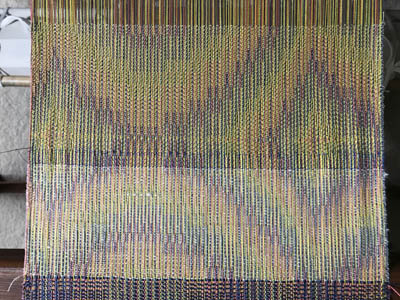
Next I played with treadling, reversing back and forth, using grey Venne cotton.
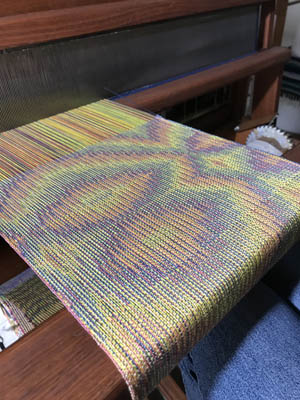
Then I tried using more than one colour in the weft, starting with magenta and pistachio, then adding aqua to the mix for a three-colour section.
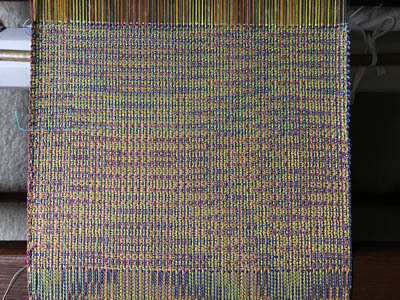
Thoughout the workshop we learned how to design our own echo pattern, how to deal with floats, how to select colour combinations, and different approaches to doubleweave. There was a wide range of age and experience in the students, and sophistication of looms, and you know you have a good group when there are lots of laughs. All via Zoom. Denise handled online teaching well, was an enthusiastic teacher, and was always willing to answer questions between classes via email. I’d do another class with her… in fact, I’ve booked another!
I’ll definitely weave Echo again. My favourite drafts were the twills, as they weave up with satisfying speed. I want to explore making them with my own design lines, and seeing if I can get an effect that’s more painterly – random rather than repetitive, with watercolour-like colour transitions.

